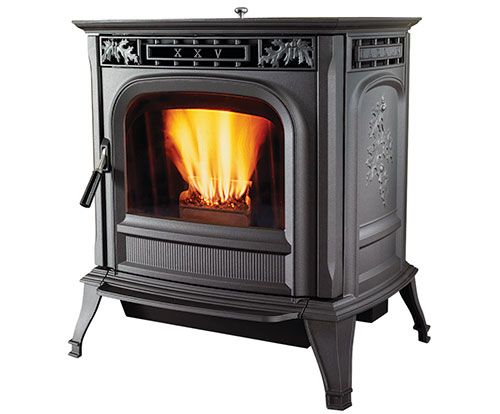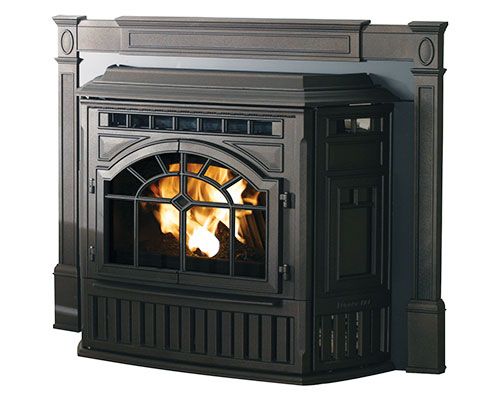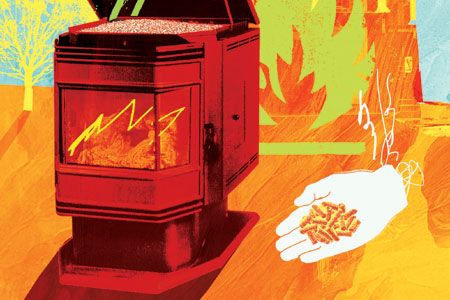Clean heat is revolutionizing home heating, with pellet stoves leading the charge. These innovative appliances burn compressed wood pellets, providing ample heat while minimizing environmental impact. In this guide, we’ll explore pellet stoves, their benefits, and how they’re changing the way we think about home heating.
What Is Clean Heat?
Clean heat refers to heating methods that minimize pollution and environmental impact while maximizing energy efficiency. These systems often use renewable resources or advanced technologies to reduce emissions and conserve energy. Pellet stoves are a prime example of clean heat technology since they offer a more environmentally friendly alternative to traditional heating methods.
Current Popularity
According to the Pellet Fuels Institute, approximately 1 million households in the United States used pellet stoves as of 2021. Retailers report that sales of pellet stoves continue to rise, indicating a strong market trend toward more sustainable home heating options.
How Pellet Stoves Work
Pellet stoves operate using a unique combustion process and feeding mechanism.
The Combustion Process
Pellet stoves use the principle of convection rather than radiation. This means the stove’s surface remains relatively cool, allowing it to be installed only three inches from a wall. The combustion process begins when pellets are fed into a burn chamber. A fan forces air into the chamber, creating combustion and producing heat.
Pellet Feeding Mechanism
The pellet feeding system is what sets these stoves apart from traditional wood-burning appliances. Users pour pellets into a hopper, which typically holds 50–90 pounds of fuel. An automated system then feeds pellets into the burn chamber as needed, maintaining a consistent heat output. Some models require manual ignition, while others feature push-button or remote start options. More advanced models can even connect to a thermostat for fully automated operation.

Benefits of Pellet Stoves
Pellet stoves have numerous advantages over traditional heating methods. Below, we’ll explore their energy efficiency, environmental impact, and potential cost savings.
Energy Efficiency
Pellet stoves are highly efficient heating appliances. They burn pellets at 70%–83% efficiency, meaning most of the fuel is converted into usable heat. This high efficiency translates to less waste and more effective heating for your home.
Environmental Impact
Pellet stoves’ positive environmental impact is one of their biggest appals. Pellets are made from recycled, super-compressed sawdust, which helps conserve trees. Additionally, pellet stoves burn cleaner than conventional woodstoves or fireplaces, producing minimal smoke and ash. This cleaner burn contributes to better air quality both inside and outside your home.
Cost Savings
Many homeowners experience substantial cost savings after switching to pellet stoves. Brenda Flick, a pellet stove enthusiast turned retailer, found that she could heat her entire 3,000-square-foot ranch house for less than $120 per month using a pellet stove, compared to up to $200 with gas heating. While individual savings may vary, the potential for reduced heating costs is a significant draw.
Types of Pellet Stoves
Pellet stoves come in two main types: freestanding models and fireplace inserts. Each type has pros and cons.
Freestanding Models
Freestanding pellet stoves are stand-alone units that can be placed in various locations within a home. They’re vented through a 3- to 5-inch double-wall pipe, offering flexibility in terms of placement. These models often feature a viewing window, allowing you to enjoy the ambiance of a fire while benefiting from efficient heating.
Fireplace Inserts
Pellet stove inserts are designed to fit into existing fireplaces. They vent through a stainless-steel lining that runs up your chimney, making use of existing structures in your home. Inserts are an excellent option for those who want to upgrade an inefficient fireplace to a more effective heating source.
Choosing the Right Pellet Stove
Consider the below factors when researching the appropriate pellet stove for your home, including size and features.
Size Considerations
The size of the pellet stove you choose should be based on the square footage you need to heat, as well as your home’s insulation quality. A stove that’s too small won’t adequately heat your space, while one that’s too large may lead to overheating and inefficiency. If need be, reach out to a heating professional to determine the right size for your needs.
Features to Look For
The below features can improve your stove’s effectiveness and overall convenience, making your pellet stove easier to use and maintain.
- Ash pan size
- Automatic ignition
- Hopper capacity
- Remote control options
- Thermostat compatibility
- Viewing window

Installing and Maintaining Pellet Stoves
Careful installation and regular maintenance are vital for safely operating your pellet stove.
Proper Placement
When installing a pellet stove, consider the following factors:
- Access to electrical outlets
- Floor protection
- Proper ventilation
- Proximity to combustible materials
While pellet stoves can be placed closer to walls than traditional wood stoves, be sure to follow manufacturer guidelines and local building codes for maximum safety.
Regular Cleaning and Upkeep
Pellet stoves require some regular maintenance to function well. This includes the following tasks:
- Refilling the hopper with pellets (every 1–3 days)
- Cleaning out ash (typically weekly)
- Inspecting and cleaning the venting system (annually)
- Checking and replacing gaskets (as needed)
Pellet Fuel Basics
Understanding pellet fuel will help you get the most out of your stove.
What Are Pellets Made of?
Pellets are typically made from compressed sawdust and wood shavings, often sourced from lumber mills and furniture manufacturers. This recycling of wood waste makes pellets an environmentally friendly fuel source. Some pellets may also include other biomass materials, such as agricultural residues.
Storing and Handling Pellets
Pellets are usually sold in 40-pound bags and should be stored in a dry, cool place. You’ll need storage space for about 3 tons of pellets to get through a typical winter. When handling pellets, be sure to keep them dry, as moisture can affect their burning efficacy.
Pellet Stove Cost Savings
While pellet stoves can offer significant savings, it’s important to consider both the initial investment and long-term costs.
Initial Investment
A pellet stove typically costs $1,000–$3,500, according to Angi. Where it falls in this range depends on your chosen model’s size and features. This price also includes professional installation costs, which can vary based on your home’s setup and local labor rates.
Long-Term Savings
Many pellet stove owners report recouping their initial investment within a few years through lower heating bills. However, the exact savings will depend on factors such as your local energy prices, your current heating system’s efficiency, and local pellet costs.
Comparing Pellet Stoves to Other Heating Options
Get an overview of how pellet stoves compare to other heating options so you can decide if one is right for your home.
Pellet Stoves vs. Traditional Wood Stoves
While both burn wood products, pellet stoves offer several advantages over traditional wood stoves:
- Automated fuel feeding
- Cleaner burn with less smoke and ash
- Easier to control heat output
- More efficient combustion
However, wood stoves don’t require electricity to operate, which can be an advantage during power outages.
Pellet Stoves vs. Gas Furnaces
Compared to gas furnaces, pellet stoves offer these pros:
- Potentially lower fuel costs
- Renewable fuel source
- Zonal heating capabilities
However, gas furnaces typically require less maintenance and can heat larger spaces more evenly.
Clean Heat Initiatives
Many regions are implementing clean heat initiatives to promote more sustainable heating methods.
Clean Heat Standards
Clean heat standards are policies designed to reduce greenhouse gas emissions from home heating. These standards often incentivize the use of technologies like pellet stoves, heat pumps, and other efficient heating systems.
Government Incentives
Some governments offer incentives for installing clean heat technologies like pellet stoves. These may include tax credits, rebates, or low-interest loans. Check with your local energy office to see what incentives are available in your area.

